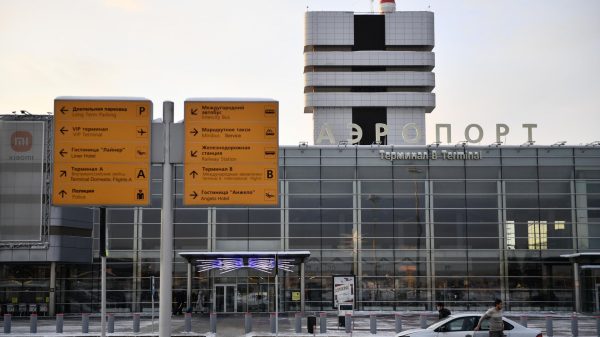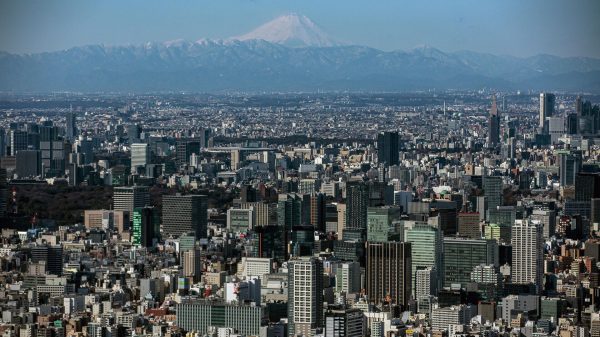
Thousands of people on the island off Nicaragua have been made destitute by the storm
Credit: Getty Images South America/Diego Cuevas
Laidy Betancourt sleeps in a tent on the floor of the Catholic church that gave her family sanctuary on the night a vicious hurricane destroyed their island.
Her home – like 80 per cent of all structures on Isla de Providencia, a remote Caribbean paradise off Nicaragua – no longer exists.
She, her husband, and 10-year-old son, need the flimsy shelter of her tent in the nave of the church because the building’s roof was ripped off by the record-breaking storm. The winds sent a beam crashing down onto her leg amid ear-splitting screams of children running for their lives.
“This was the first time I’ve lived through something like this and I think it will be the last, because we’re thinking about moving from here,” she told The Telegraph.
With little left standing on the Colombian island, the Betancourt family will likely be joined by thousands of others made destitute by the latest powerful storm to pummel the region.
Hurricane Iota broke records as the largest hurricane ever to hit the area, and also the strongest storm ever recorded so late in the Hurricane season.
Hurricane Iota
The 2020 season has already lasted longer than most and meteorologists ran out of names to identify new storms, turning to the Greek alphabet for the second time ever.
Hurricane Iota later barreled through Nicaragua and Honduras, killing over 40 people, including one person in Providencia.
The Royal Navy has deployed in Honduras, flying reconnaissance missions over the areas most devastated. China and the United States have promised hundreds of thousands of dollars in relief aid.
The Colombian government has delivered 1,500 tents to Isla de Providencia, which can now be spotted on front porches and on top of home foundations.
“We will be suffering for a long time because this is an island, not on the mainland. Everything to repair this place will have to arrive via sea,” the church’s priest where the Betancourt family is sleeping, Benito Huffington, said. He huddled in his home’s bathroom with three elderly nuns as the storm passed.

The island before (above) and after Hurricane Iota hit
Credit: AFP
The hurricane significantly damaged all structures on the island with up to 80 per cent of buildings completely destroyed, according to the central government’s estimates.
The 160mph winds tossed fishing boats into the streets and left piles of rubble where many homes once stood. Piles of debris and downed trees still block many of the mountainous island’s streets.
Felipe Cabezas told The Telegraph of how he held tight to a thin plastic bathroom door as the howling winds nearly ripped his last it piece of shelter from his hands. The flimsy swinging door separated him, his wife, sister, and nephew from the carnage outside.
“The only thing we did was pray,” he said. “But it was too strong, the wind hit, and everything was shaking, and this was all going to fall. One more hour of that and we would be dead.”
The hurricane largely caught Isla de Providencia’s 5,000 or so residents by surprise, with the storm’s eye passing just 18 kilometers from their shores after a late shift in its trajectory and escalation in intensity. Storms of this size rarely form so late in the year and rarely make it so far south.
The storm destroyed the Catholic school where over 250 children studied. Built in 1932, the building was designated a national monument. It also left the local hospital in disrepair.
Despite the damage, not all residents want to move back to the mainland. Over half to the archipelago’s residents identify as Raizal, an Afro-Caribbean group native to the islands. Many of them say they would never leave.
“That was a very hard day, that breaze started to come in, and boof, boof, boof, the roof was lifted up,” Virginia Webster, who was born and has lived on the island her whole life said in English mixed with her native Creole. “This is like a fire that has passed through the whole island.”

People walk near damaged houses and fallen electricity poles after the passage of Storm Iota, in Providencia
Credit: Nathalia Angarita/REUTERS
The island last faced significant damage from a major hurricane in 2005 when Hurricane Beta damaged over 1,000 homes, but had never before been impacted by a category five storm. Hurricane Eta, which passed by the island just three days before Iota, damaged over 50 homes. Eta went on to cause significant damage in Nicaragua, Honduras, and Guatemala and killed nearly 200.
Scientists warn that warming waters due to global warming could continue to make powerful storms like Iota more frequent. Iota marked only the second category five storm ever recorded in November. The Atlantic hurricane season ends on November 30.
























































Свежие комментарии